Destiny 2 features a powerful weapon system that also happens to be quite unintuitive for newcomers. Understanding the difference between weapon classes and types, Special weapons and Energy weapons, and so on, can be difficult at first.
This guide will walk you through Destiny 2’s weapon system, starting with the basics and then covering its more nuanced aspects.
Weapon Classes in Destiny 2
Weapons in Destiny 2 are divided into three classes: Primary weapons, Special weapons, and Heavy weapons. These classes are defined by the type of ammo they require, either the infinitely available Primary ammo (white boxes), the rarer Special ammo (green boxes), or the hardest-to-obtain Heavy ammo (purple boxes).

Ammo & Weapon Types, Destiny 2
Weapon types in Destiny 2
Weapon types tend to all use the same ammo type. For example, all Sniper rifles use Special ammo, whereas all Pulse Rifles use Primary ammo. There are, of course, a few exceptions, but for the vast majority of weapons, this is the ammo type they use:
| Weapon Type | Ammo |
|
Primary
|
|
Special
|
|
Heavy
|
Primary weapons
Primary weapons are the foundation of your loadout. With infinite ammo, they are the weapons you will use most of the time. Generally, they will be the best tool against red-bar enemies (ads), allowing you to save your precious Special and Heavy ammo for more challenging enemies.
There are 6 Primary weapon types in the game, and they all use primary ammo.
| Primary weapons | Role | |
| Hand Cannons | Decent damage and range | |
| Scout Rifles | Good damage and range | |
| Auto Rifles | Good damage, decent range | |
| Pulse Rifles | Average damage, decent range | |
| Sidearms | Highest damages, lowest range | |
| Submachine Gun | High damage, limited range | |
| Combat Bows | Near infinite range |
If you’re looking for precise damage figures or simply wonder what the highest-damage weapons are, check out our Weapon damage chart.
Special Weapons
Special ammo is harder to come by, but with the right mods and playstyle, you can ensure you always have some Special ammo in hand. Special ammo is usually reserved for tougher enemies, such as Majors, ad clear when dealing with groups of enemies, or during boss damage phases once you’ve run out of Heavy ammo.
There are currently six weapon types in the game that use special ammo.
| Special Weapons | Main Role | |
| Fusion Rifles | Add Clear, Single Target Damage | |
| Shotguns | Single Target Damage | |
| Sniper Rifles | Single Target Damage | |
| Trace Rifles | Add Clear | |
| Glaives | Single Target Damage | |
| Breach Grenade Launchers | Add Clear, Single Target Damage |
Heavy Weapons
Heavy weapons are the most powerful in the game, and heavy ammo are the hardest to find. You will want to save them for the most challenging encounters: Emergency ad clear and boss damage phases.
There are currently five types of Heavy weapons in the game.
| Power weapons | Main Role | |
| Rocket Launchers | Burst Damage | |
| Linear Fusion Rifles | Single Target Damage | |
| Swords | Add Clear, Single Target Damage | |
| Grenade Launchers | Add Clear | |
| Machine Guns | Add Clear |
We cover Heavy weapons in-depth here (top-tier options, their place in the meta, etc).
Weapon slots in Destiny 2
There are 3 different weapon slots in Destiny 2:
- Kinetic: Kinetic weapons do more damage to enemies without a shield but cannot do elemental damage.
- Energy: Energy weapons do elemental damage (either Arc, Void, or Solar) and do extra damage to shielded enemies with matching elements.
- Heavy: Heavy weapons do elemental damage too, but also require Heavy ammo (which is harder to find).
And this is where things become confusing. Weapon types and weapons are not the same thing. This cumbersome system is the result of a significant overhaul of the weapons system when the Forsaken expansion was launched.
But to keep things simple:
- Weapon types are defined by the ammo they use (and how powerful they are)
- Weapon slots are defined by the type of damage they do
Kinetic weapons
Kinetic weapons sit in the Kinetic slot and deal Kinetic damage, and unlike Energy and Heavy weapons, they cannot do light-based elemental damage (Arc, Solar or Void). This means they aren’t ideal when dealing with Arc, Solar or Void-shielded enemies. But on the other hand, Kinetic weapons do 10% more damage to unshielded enemies than Special weapons in PvE.
Be aware that Strand and Stasis weapons also sit in the Kinetic slot, but do not get this 10% damage bonus.
Energy weapons
Special weapons are those that sit in the Special slot and they all deal element damage. Energy weapons can do either Solar, Arc, or Void damage, and are perfectly suited to deal with shielded enemies. Kinetic weapons may be able to deal more damage to unshielded enemies, but Special weapons can simply tear through enemy shields as long as you are using a matching element (roughly 3 times more damage until their shields are destroyed).

Light and Dark Elements, Destiny 2
Primary and Special ammo
Kinetic and Energy weapons do have one thing in common: they both include Primary and Special ammo weapons.
Pro tip: You can also tell whether a weapon is Kinetic or Special simply by looking at its icon orientation:
- Kinetic weapons point to the left
- Special weapons point to the right
Heavy slot
While Kinetic and Energy weapons include Primary and Special ammo weapons, Power weapons only include guns that use Heavy ammo, aka, the purple ammo boxes. Just like Energy weapons, Heavy weapons also deal element damage, either Stasis, Strand, Solar, Arc, or Void damage, and are perfectly suited to deal with shielded enemies.
Needless to say, Heavy weapons are the most powerful in the game, but their ammo is the most difficult to find.
Before you go…
We cover the most Meta weapons currently in the game in our Best Destiny 2 Weapons guide.




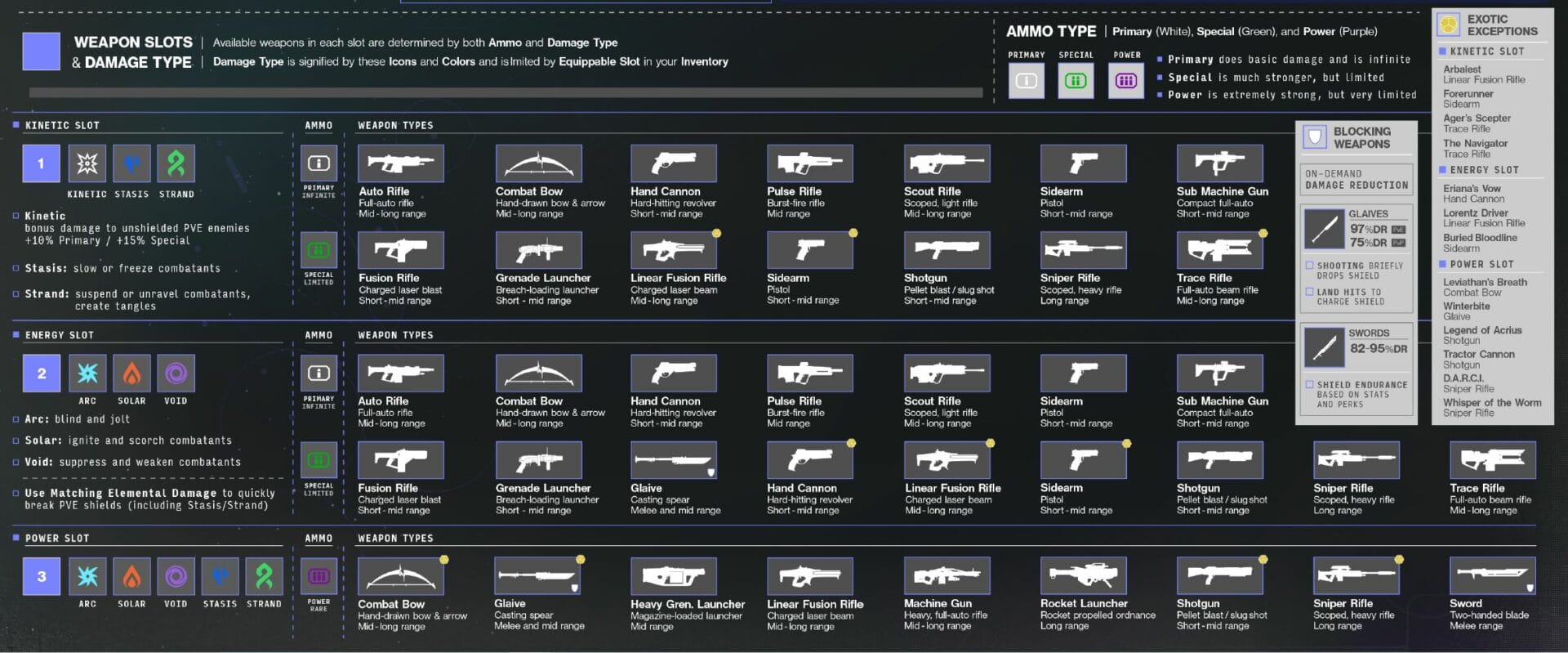
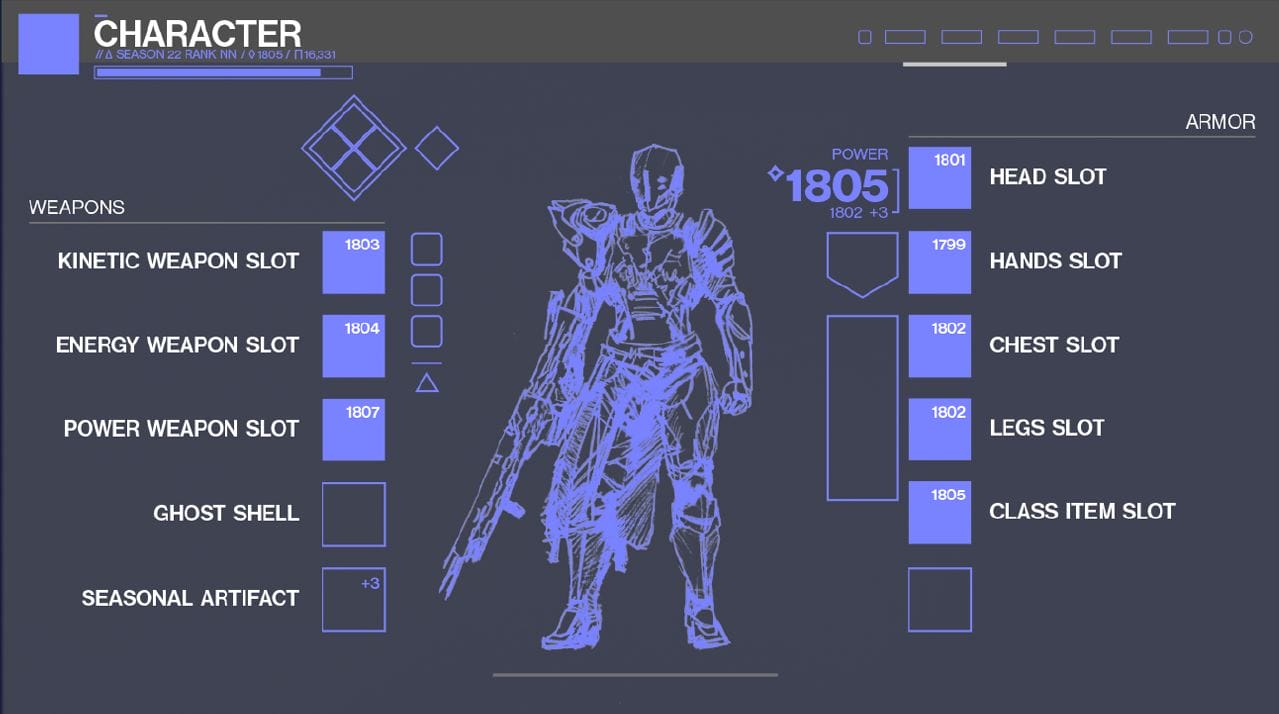
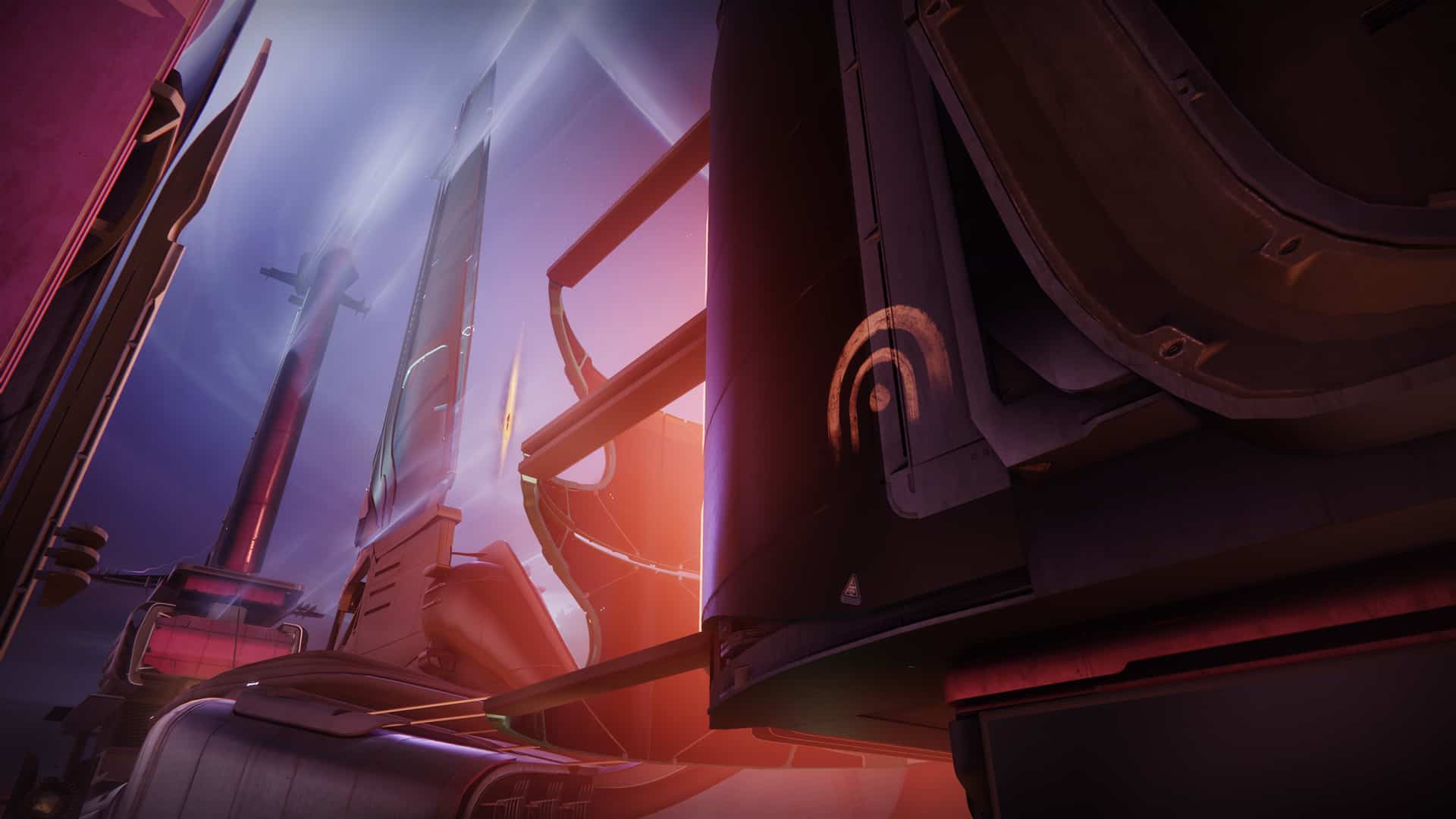
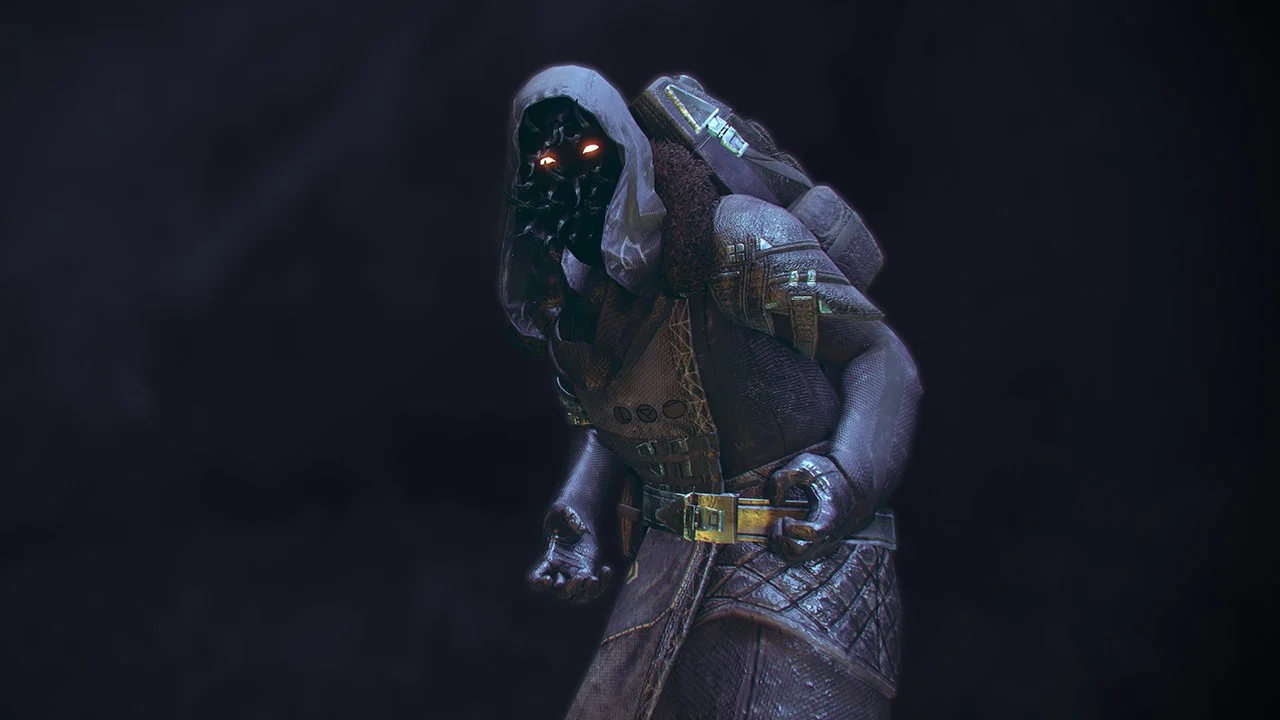
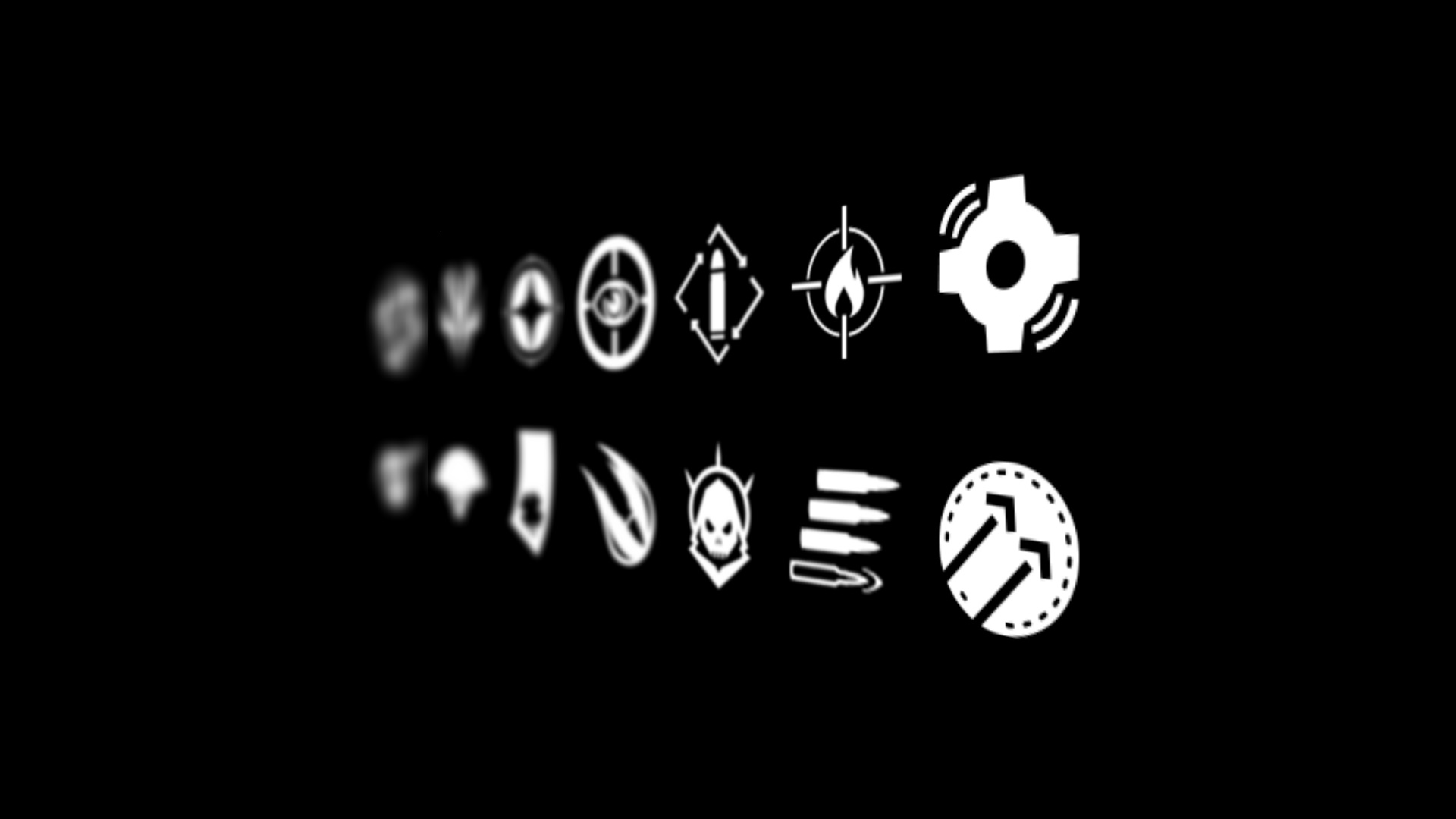
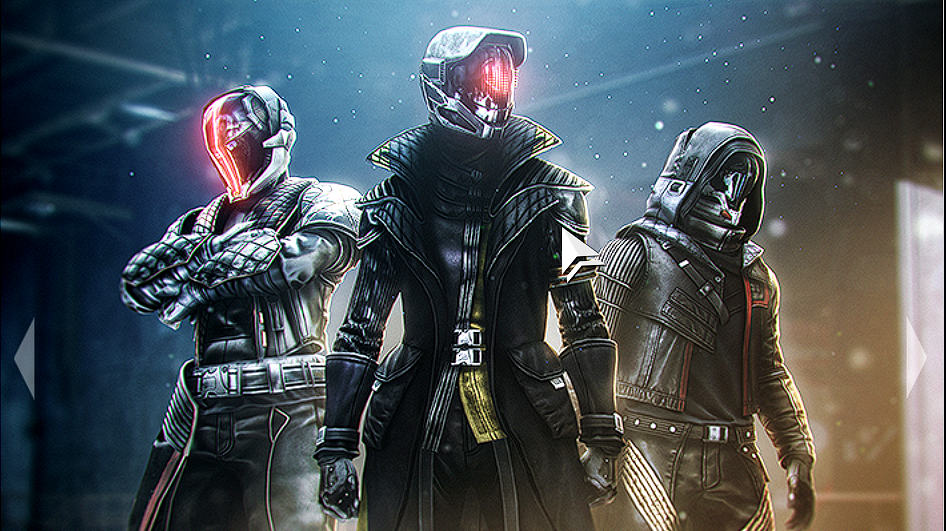


0 Comments